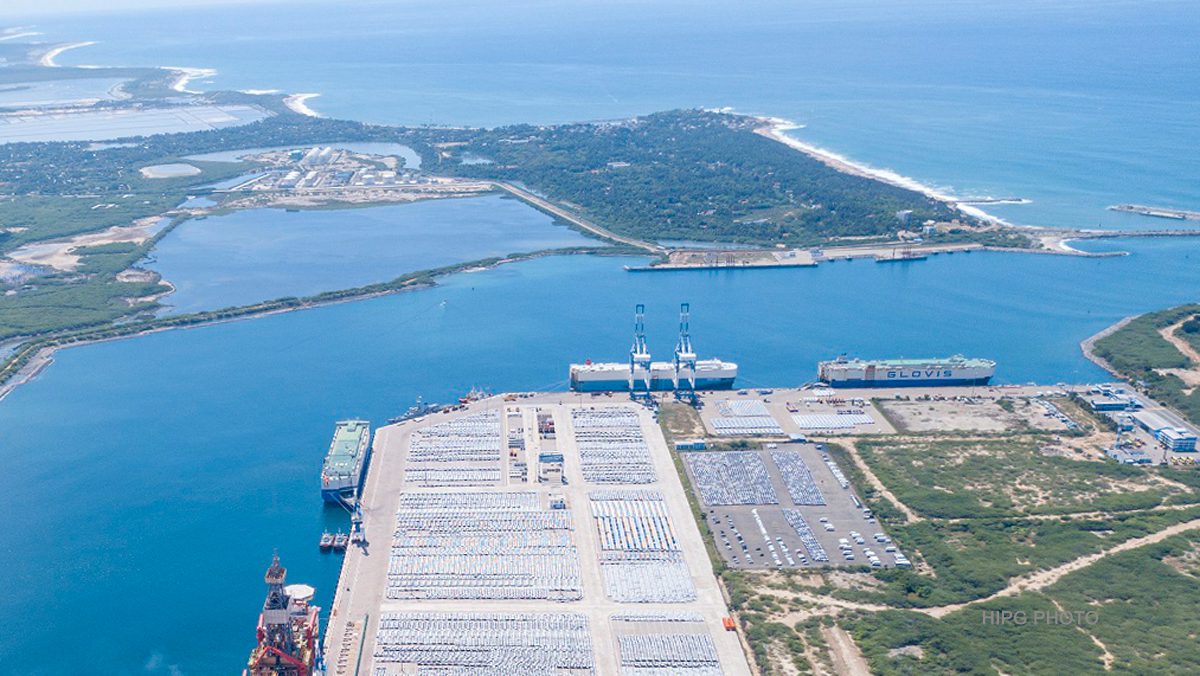General
Sri Lanka’s China-backed Port eyes Japan reconditioned car shipments


ECONOMYNEXT – Sri Lanka’s main current external inflows have exceeded import for the fourth straight month as tighter monetary policy led to private sector de-leveraging and state enterprises also cut credit funded losses through market pricing of sales.
In September imports exports and remittances were 1,438 million US dollars, 154 million US dollars more than the imports of 1,284 million US dollars.
In August imports were 1,486 million US dollars against the total of exports and remittances of 1,549 million US dollars.
In July the total of imports and remittances were 1,444 million US dollars, against imports of 1,287 million US dollars.
In June the total of exports and remittances were 1,522 million US dollars, outpacing imports of 1,226 million US dollars.
Since most private sector economic agents are net savers, credit has to be positive to turn all inflows into imports.
Loans to fill state energy enterprise losses, directly turn into imports.
In June the total of private and state enterprise credit turned to a negative of 61.4 million US dollars, in July it was a negative of 15.9 billion rupees, in August 113.1 rupees negative and in September 34.1 million rupees negative.
“Central Bank purchases of foreign exchange from commercial banks have been positive on a net basis for two months,” Udeeshan Jonas – Chief Strategist CAL Group, a Colombo based investment banks said.
“Now the balance of payments is starting to turn positive. Rates were hiked and interest rates are now high,”
“Energy is market priced, private credit has declined and taxes have also been raised to contain the deficit and monetary financing is coming down.
“Banks are also building back their net open positions, which were negative six months ago. The currency adjustment also helps in the short term.
“The combined improvement is reflecting in the trade balance. There have also been financial inflows in to the equity and debt markets. We can reasonably say there is an improvement in the current account also.”
If credit was strong, financial account inflows also turn into imports. However at the moment some banks, while building their NOPs are also repaying debt, which tends to contribute towards a current account surplus.
Foreign exchange shortages emerge when a soft-pegged central bank injects money through open market operations to suppress interest rates and fire credit with what classical economists called ‘fictitious capital’, pressuring the rupee.
Since ordinary people – or the government through its budget deficit – cannot print money, the central bank is the only agency that create forex shortages.
Sri Lanka’s rupee collapsed from 200 to 360 to the US dollar in 2022, after a two years of money printing by macro-economists to keep interest rates down and boost growth or target an output gap.
The International Monetary Fund in an extraordinary move gave technical support to Sri Lanka’s central bank, an intermediate regime agency which had printed money and gone for IMF bailouts 16 times earlier, to calculate an output gap, with predictable consequences.
Sri Lanka ran into consecutive currency crises from 2015 as money was printed under flexible inflation targeting, a aggressive soft-pegging strategy where floating rate style monetary policy is unleashed on a reserve collecting peg to mis-target rates under ‘data driven’ policy.
The policy errors is then compensated by depreciation (called a flexible exchange) and rates are hiked in a hurry, triggering an output shock and social unrest.
In 2019 after output shocks from two currency crises, taxes were also cut by economists who said there was a ‘persistent’ output gap (low growth) and historically large volumes of money were printed to stop rates from going up to finance the deficit. (Colombo/Nov06/2022)








